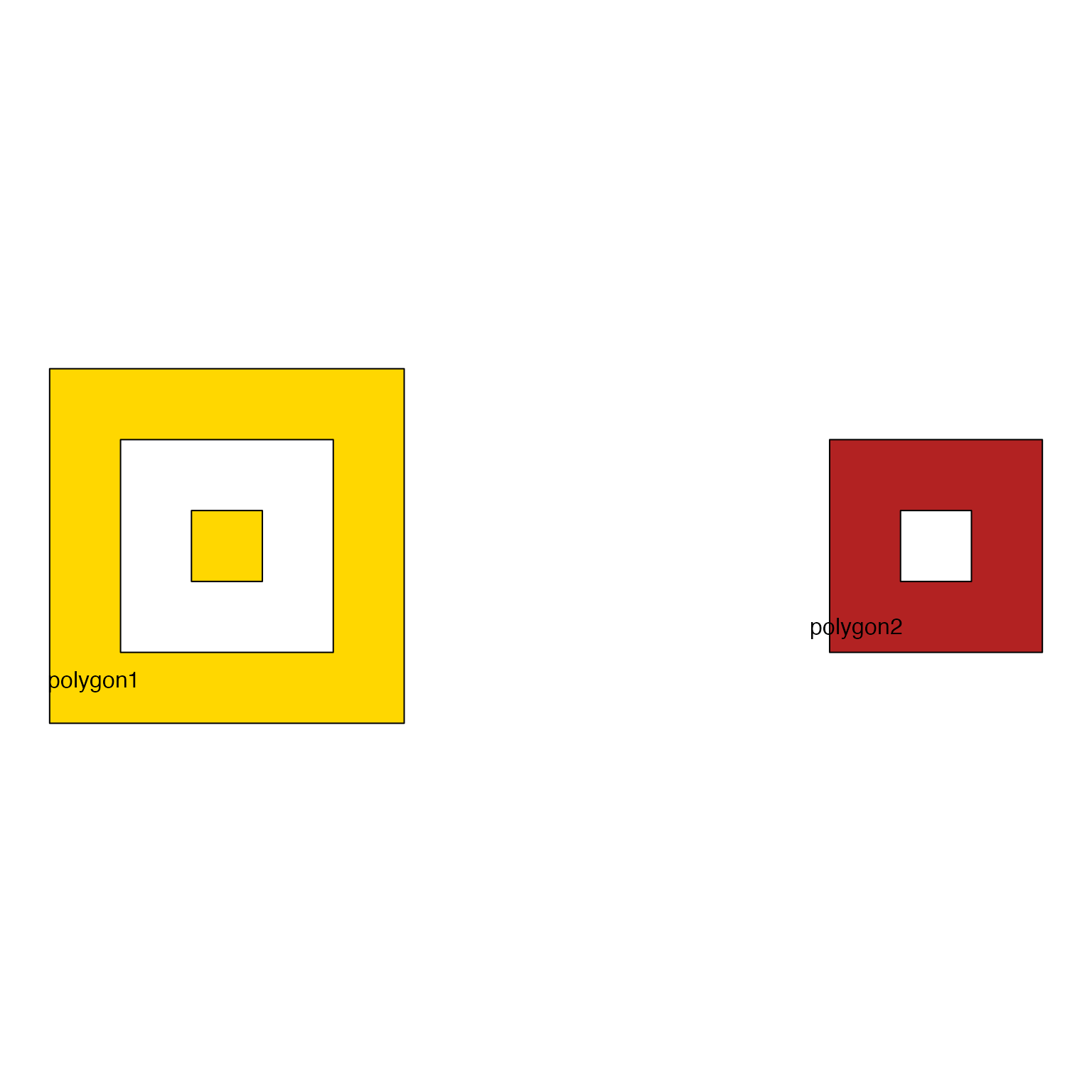Union one or more JamPolygon objects
See also
Other JamPolygon:
JamPolygon-class,
[,JamPolygon-method,
add_orientation_JamPolygon(),
area_JamPolygon(),
bbox_JamPolygon(),
buffer_JamPolygon(),
check_JamPolygon(),
eulerr_to_JamPolygon(),
farthest_point_JamPolygon(),
find_venn_overlaps_JamPolygon(),
has_point_in_JamPolygon(),
intersect_JamPolygon(),
label_fill_JamPolygon(),
label_outside_JamPolygon(),
label_segment_JamPolygon(),
labelr_JamPolygon(),
minus_JamPolygon(),
nearest_point_JamPolygon(),
nudge_JamPolygon(),
plot.JamPolygon(),
point_in_JamPolygon(),
polyclip_to_JamPolygon(),
polygon_circles(),
polygon_ellipses(),
sample_JamPolygon(),
split_JamPolygon(),
update_JamPolygon()
Examples
df3 <- data.frame(name=c("polygon1", "polygon2"),
label=c("polygon1", "polygon2"),
x=I(list(
list(c(1, 6, 6, 1),
c(2, 5, 5, 2),
c(3, 4, 4, 3)),
list(#c(11, 16, 16, 11),
c(12, 15, 15, 12),
c(13, 14, 14, 13))
)),
y=I(list(
list(c(1, 1, 6, 6),
c(2, 2, 5, 5),
c(3, 3, 4, 4)),
list(#c(1, 1, 6, 6),
c(2, 2, 5, 5),
c(3, 3, 4, 4))
)),
fill=c("gold", "firebrick"))
jp3 <- new("JamPolygon", polygons=df3);
plot(jp3);
 jp3b <- union_JamPolygon(jp3, new_name="polygons 1,2")
plot(jp3b)
jp3b <- union_JamPolygon(jp3, new_name="polygons 1,2")
plot(jp3b)
 # test empty polygon
jp3na <- jp3;
jp3na@polygons[2, "x"] <- I(list(NA))
jp3na@polygons[2, "y"] <- I(list(NA))
jp3na
#> An object of class "JamPolygon"
#> Slot "polygons":
#> name label x y fill
#> 1 polygon1 polygon1 c(1, 6, .... c(1, 1, .... gold
#> 2 polygon2 polygon2 NA NA firebrick
#>
union_JamPolygon(jp3na[1,])
#> An object of class "JamPolygon"
#> Slot "polygons":
#> name label x y fill
#> 1 polygon1 polygon1 c(1, 6, .... c(1, 1, .... gold
#>
union_JamPolygon(jp3na)
#> An object of class "JamPolygon"
#> Slot "polygons":
#> name label x y fill
#> 1 polygon1 polygon1 c(1, 6, .... c(1, 1, .... gold
#>
# test empty polygon
jp3na <- jp3;
jp3na@polygons[2, "x"] <- I(list(NA))
jp3na@polygons[2, "y"] <- I(list(NA))
jp3na
#> An object of class "JamPolygon"
#> Slot "polygons":
#> name label x y fill
#> 1 polygon1 polygon1 c(1, 6, .... c(1, 1, .... gold
#> 2 polygon2 polygon2 NA NA firebrick
#>
union_JamPolygon(jp3na[1,])
#> An object of class "JamPolygon"
#> Slot "polygons":
#> name label x y fill
#> 1 polygon1 polygon1 c(1, 6, .... c(1, 1, .... gold
#>
union_JamPolygon(jp3na)
#> An object of class "JamPolygon"
#> Slot "polygons":
#> name label x y fill
#> 1 polygon1 polygon1 c(1, 6, .... c(1, 1, .... gold
#>